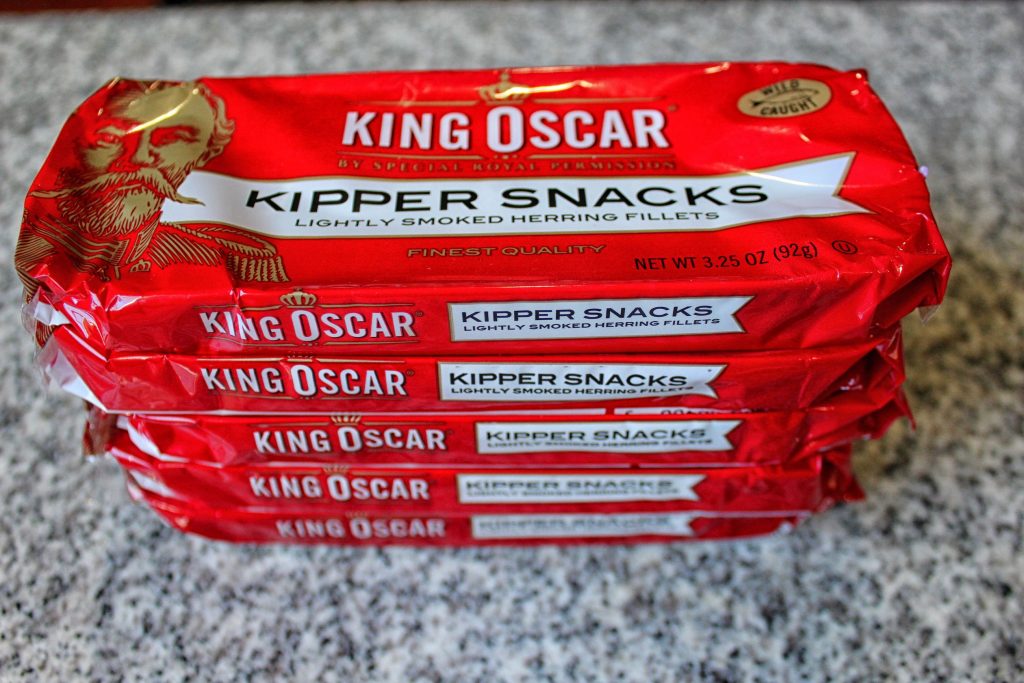More Danish Smørrebrød, featuring Sol over Gudhjem
It was just last month when we covered Smørrebrød, the Danish open-faced sandwiches that use their deliciously dense Rugbrød as a base for an unending variety of toppings. There are any number of Smørrebrød variants, as many as your imagination can conceive of while following the basic rules we discovered in our investigation:
- Fish sandwiches are served before meat and cheese, and of the various fish sandwiches possible, herring is always first.
- The bread should first be spread with butter, a layer thick enough that teethmarks would be visible in it if you were to bite into it. (They even have a word for this, tandsmør, which literally translates as tooth butter)
- However, the sandwiches will usually be eaten with knife and fork rather than picked up and eaten out of hand. So cover every square millimeter of that bread with toppings. Don’t be shy!
However, in the vast and infinite possibilities of Smørrebrød, a few combinations have become so popular, or have such interesting stories behind them, to have taken on individual identities beyond the category Smørrebrød. One such is Dyrlægens Natmad, which we covered back in 2016. Another is the feature of today’s post, Sol over Gudhjem.
Sol over Gudhjem means “Sun over Gudhjem,” Gudhjem being a fishing port on the Danish island Bornholm, and the traditional center of the smoked herring trade in Denmark. This sandwich features smoked herring, sometimes called “kippers,” thus explaining half the name. The other half? The sun in this sandwich describes the single raw egg yolk that sits atop the herring.
The island of Bornholm, and the town of Gudhjem in particular, take pride in their history of smoked herring production, and the sandwich is an emblem of that pride. A prestigious chef competition called Sol over Gudhjem, featuring chefs from all over Denmark working with local Bornholm ingredients, has been held on on the island annually since 2009. Though the number of smokehouses on the island has decreased, their pride in the practice is still evident in this video, nominally about the sandwich but mostly a love letter to the smokehouses of Bornholm.
Sadly, I don’t have access to the lovely smoked herrings of Bornholm here, an ocean away. The best I can do is to cheat with these tins of kippers, caught and smoked in Canada.

Naturally, the process starts with Rugbrød, sliced thin and covered with a thick swipe of butter. The Rugbrød is again from the O&H Danish Bakery in Racine, WI. The butter is Kerrygold.

Rugbrød 
Buttered Rugbrød
Atop this base is laid a kipper fillet.

As described in the video, the remaining ingredients are egg yolk, radishes, chives, and salt. Though a standard addition is a ring of onion, to keep the egg yolk from traveling, and I also used a bit of fresh ground black pepper as seasoning.

It’s a pretty sandwich.

Cutting into it, I went straight for the yolk, anticipating that it would make a tremendous sauce for bathing and dipping the remainder of the sandwich. I was not wrong.

Smoked kippers are salty and smoky, oily and aromatic, with a flaky texture common to fish, but firm and chewable. The delightfully gooey egg yolk clings to both kipper and bread and providing a boost to the richness of each bite, while the crunch of onion and radish are welcome textural counterpoints. It’s a delightful sandwich and meal in its own right.
But rare is the time when a single Smørrebrød is consumed in isolation, and I recalled a suggestion from last month that I hadn’t pursued at that time–Tartar med æggeblomme, or raw seasoned minced beef served with raw egg yolk as well.

For the beef, I chose to use tenderloin, and mince it manually with a knife, rather than grind it with my sausage grinder. I seasoned it with a small amount of whole grain Dijon mustard, olive oil, salt, pepper, finely minced tarragon, and shredded onion.
The bread was prepared as before, sliced thin with a thick spread of butter, but I added grated horseradish as well to complement the flavor of the beef.

Then a thick layer of beef tartare went on each slice of bread, about 3 ounces per sandwich.

To garnish, I chose capers, radish, and chives, in addition to the raw egg yolk and stabilizing ring of onion. Sadly my pickled beets had perished in a small refrigerator catastrophe and I had not yet replaced them.

Tartar med æggeblomme 
Tartar med æggeblomme
I can see why this was suggested. Food safety fears have sidelined the consumption of raw beef for some time, despite a recent resurgence, and it’s not something that the average sandwich shop will be putting on its menu any time soon. But by purchasing good quality beef and mincing it myself in absolutely clean conditions, I was able to minimize the risks and create something delicious and beautiful. Much like with sushi, the greatest delight, to me, of steak tartare is the texture of the raw meat, unchanged by the application of heat, toothsome but yielding. In this case, the briny bursts of capers and the delicious “sauce” of the egg yolk were distractions from the pure pleasure of the beef.

Still the Sol over Gudhjem was the star of this show. It’s a classic for a reason. Salting and smoking fish is a centuries-old method of food preservation, unneeded in this age of refrigeration, but still performed for the rewarding flavors it unlocks. It’s one of the signature flavors of Denmark, and especially of the island of Bornholm from which this sandwich comes.

I like sandwiches.
I like a lot of other things too but sandwiches are pretty great









Recent Comments